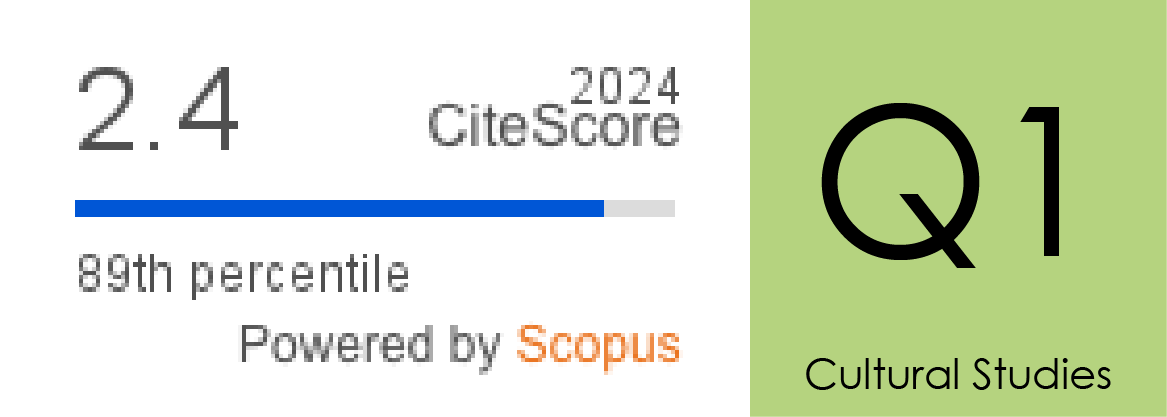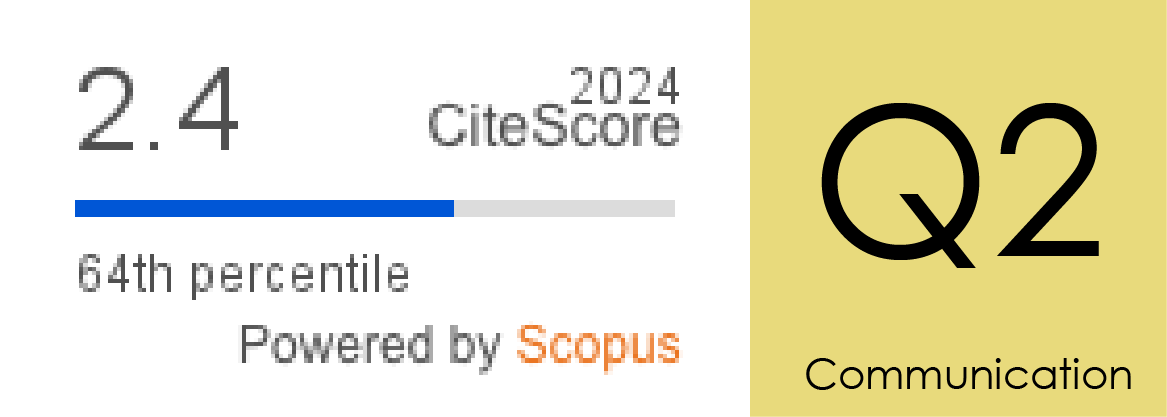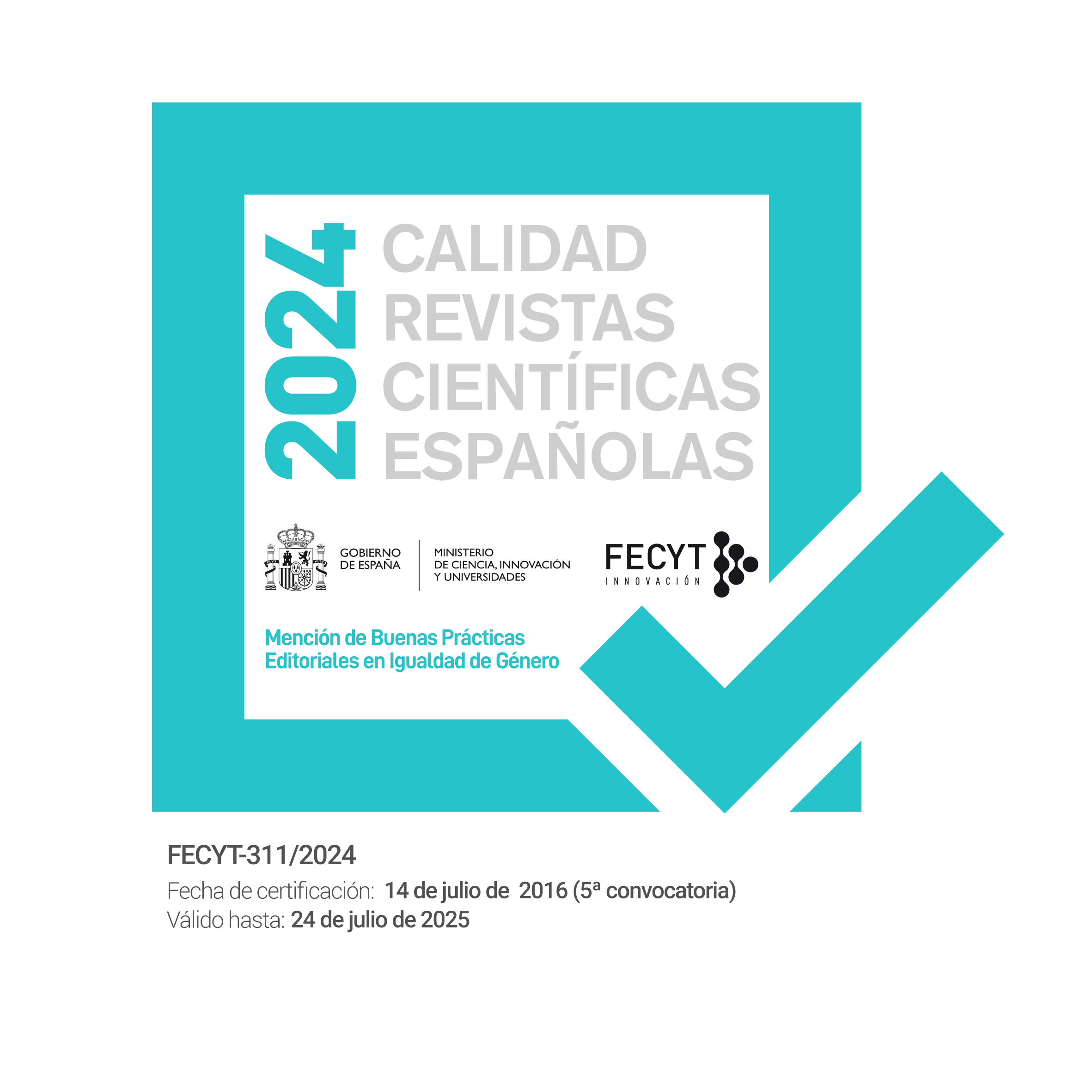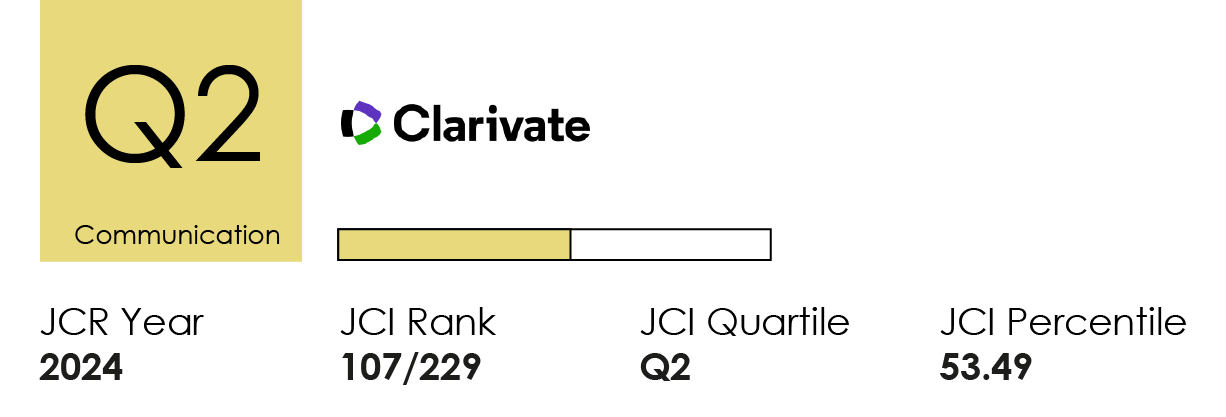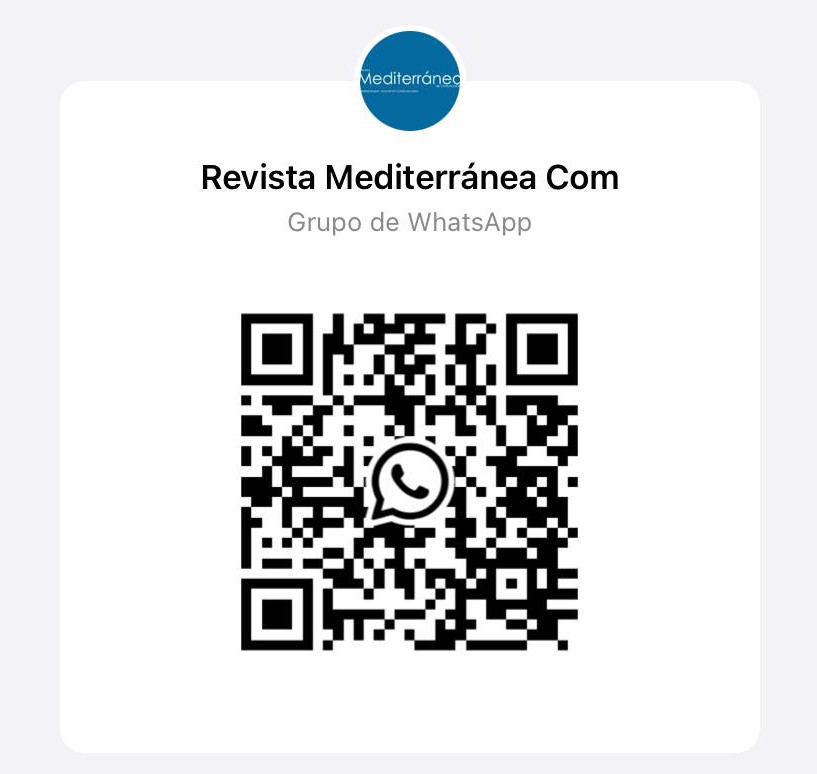Las redes sociales como canal comunicativo: el caso de las asociaciones de consumidores de España y Portugal
DOI:
https://doi.org/10.14198/MEDCOM2014.5.1.12Palabras clave:
Medios sociales, Canal comunicativo, Comunicación dialógica, Consumidores, ConsumerismoResumen
Este trabajo estudia el uso que hacen de los social media (Facebook y Twitter), las dos principales organizaciones de consumidores de Portugal y España, DECO y OCU, respectivamente. La investigación, que se fundamenta metodológi-camente en el estudio de caso, se basa en los postulados de la comunicación dialógica digital para analizar cómo se legitiman las organizaciones en estas plataformas y cuál es su compromiso con esta forma de relación a partir de variables como el número de mensajes respondidos, la rapidez en la respuesta y el número de seguidores. Los resultados confirman su eficacia como canal comunicativo para satisfacer las dudas de los usuarios de manera responsable, recíproca y con sentido de comunidad.
Financiación
Este artículo forma parte del proyecto de movilidad de la UJI con el código E-2012-14Citas
AACKER, D. A. y DAY, G. S. (1974). Consumerism: Search for the consumer interest. New York: Free Press.
BELL, J. (1997). Como realizar um projecto de investigação. Lisboa: Gradiva.
BRIONES R. L. et al. (2011). Keeping up with the digital age: How the American Red Cross uses social media to build relationships. Public Relations Review, vol. 37(1), 37-43. DOI: 10.1016/j.pubrev.2010.12.006.
CASTRO MONGE, E. (2010). El estudio de casos como metodología de investigación y su importancia en la administración y dirección de empresas. Revista Nacional de Administración, vol. 1(2), 31-54.
GARCÍA ARRIZABALAGA, I. et al. (2012). Credibilidad de las fuentes de información sobre responsabilidad social corporativa. Revista de Responsabilidad Social Corporativa, vol. 4(1), 59-78.
GRUNING, J. E. y HUNT, T. (1984). Managing public relations. New York: Holt, Rinehart & Wilston.
HALLAHAN, K. (2008). Organizational-public relationship in cyberspace. En HANSEN-HORN, T.L. y NEFF, B.D. (Eds), Public Relations: From Theory to Practice, pp. 46-73. Boston: Pearson.
JAVA, A. et al. (2007). Why we Twitter: understanding microblogging usage and communities. En Proceedings of the 9th WebKDD and 1st SNAKDD 2007 workshop on Web mining and social network analysis (WebKDD/SNA-DKK’07, 56-65. New York: ACM Press.
KAPLAN, A. y HAENLEIN, M. (2010). Users of the World, Unite! The challenges and opportunities of social media. Business Horizons, vol. 53(1), 59–68. DOI: 10.1016/j.bushor.2009.09.003.
KARLBERG, M. (1993). Remembering the public in public relations research: from theoretical to operational symmetry. Journal of Public Relations Research, vol. 8(4), 263-278. DOI:10.1207/s1532754xjprr0804_03.
KENT, M. L. (2013). Using social media dialogically: Public relations role in reviving democracy. Public Relations Review, vol. 39(4), 337–345. Using social media dialogically: Public relations role in reviving democracy.
KENT, M. L. y TAYLOR, M. (1998). Building dialogic relationship through the World Wide Web. Public Relations Review, vol. 24(3), 321- 334.
KENT, M. L. y TAYLOR, M. (2002). Toward a dialogic theory of public relations. Public Relations Review, vol. 28(1), 21-37.
LEE, S. T. (2012). Beautifully imperfected: Using Facebook to change a population’s attitudes toward marriage. Public Relations Review, vol. 38(3), 515-517. DOI: 10.1016/j.pubrev.2012.02.001.
MERRIAM, S. B. (1988). Case Study Research in Education. San Francisco: Jossey Bass.
MORRIS, T. (2009). All a Twitter: a personal and professional guide to social networking with Twitter. Indianapolis, IN: Que Publishing.
O’CONNOR, R. (2009). Facebook and Twitter Are Reshaping Journalism As We Know it. Disponible en http://www.alternet.org/story/121211/facebook_and_twitter_are_reshaping_journalism_as_we_kn
ow_it
O’REILLY, T. (2012). What is Web 2.0? Design Patterns and Business Models for the Next Generation of Software. En MANDIBERG, M. (Ed), The Social Media Reader, 32-52. New YorkLondon: New York University Press.
SILVERPOP (2012). Infographic: The Social Network Landscape. Disponible en http://www.silverpop.com/blogs/email-marketing/social-network-growth-infographic.html
WATERS, R. D. (2009). The use of social media by nonprofit organizations: An examination from the diffusion of innovations perspective. En DUMOVA, T.; FIORDO, R. (Eds.), Handbook of research on social interaction technologies and collaboration software: Concepts and trends, 473-485. Hershey, PA: IGI Publishing.
WATERS, R. D. et al (2009). Engaging stakeholders through social networking: How nonprofit organizations are using Facebook. Public Relations Review, vol.35(2), 102-106. DOI: 10.1016/j.pubrev.2009.01.006.
ZERFASS, A. y SCHRAMM, D.M. (2014). Social Media Newsrooms in public relations: A conceptual framework and corporate practices in three countries. Public Relations Review, vol. 40 (1), 79–91. DOI: 10.1016/j.pubrev.2013.12.003.
Descargas
Estadísticas
Publicado
Cómo citar
Número
Sección
Licencia
Derechos de autor 2014 Joao Canavilhas, Sonia González-Molina

Esta obra está bajo una licencia internacional Creative Commons Atribución-CompartirIgual 4.0.
Los autores y autoras que publican en esta revista están de acuerdo con los siguientes términos:
1 Derechos de autor. Los autores y autoras conservan sus derechos de autor, aunque ceden a la revista de forma no exclusiva los derechos de explotación (reproducción, distribución, comunicación pública y transformación) y garantizan a esta el derecho de primera publicación de su trabajo, el cual estará simultáneamente sujeto a la licencia indicada en punto 2. Los autores pueden establecer otros acuerdos adicionales para la distribución no exclusiva de la versión de la obra publicada en la revista, siempre que exista un reconocimiento de su publicación inicial en esta revista.
© Los autores.
2 Licencia. Los trabajos se publican en la revista sujetos a la licencia de Reconocimiento 4.0 Internacional de Creative Commons (CC BY 4.0); los términos se pueden consultar en https://creativecommons.org/licenses/by/4.0/
Esta licencia permite a terceros compartir (copiar y redistribuir el material en cualquier medio o formato) y adaptar (remezclar, transformar y crear a partir del material para cualquier finalidad, incluso comercial), siempre que se reconozca la autoría y la primera publicación en esta revista (Revista Mediterránea de Comunicación (RMC) / Mediterranean Journal of Communication (MJC), Universidad de Alicante, DOI de la obra), se proporcione un enlace a la licencia y se indique si se han realizado cambios en la obra.
3 Política de autoarchivo. Se recomienda a los autores que difundan sus trabajos a través de Internet para favorecer una circulación y difusión más rápidas y, con ello, un posible aumento en la citación y alcance entre la comunidad científica y académica, en las siguientes condiciones:
No se permite a los autores depositar en un repositorio institucional o temático, página web propia, etc., las versiones preprint (versión antes de ser evaluada) o postprint (versión evaluada y aceptada para su publicación) de sus trabajos antes de su publicación, pero sí el artículo final publicado (versión del editor).


